SANTA FE, N.M. — Scott Conway tells me to pull over along a remote stretch of two-lane highway in Heron Lake State Park, just north of where the Rio Chama dumps into El Vado Reservoir. There’s no one else in sight. Bolts of lightning crack in the distance as we walk toward Conway’s dig site, located just a stone’s throw from the road along the bank of a grassy creek.
He had been excavating here, quite illegally and yet undetected, during the previous five years in search of a fortune that a retired millionaire claims to have buried somewhere in a vast swath of the Rocky Mountains ― somewhere north of Santa Fe, above 5,000 feet elevation in the rest of northern New Mexico, Colorado, Wyoming or Montana.
It’s like a scene from the Disney movie “Holes” ― a deep, hot tub-sized crater filled with rainwater and surrounded by a ringed mound of dirt. Conway points to his hole, then looks at me and proudly proclaims, “That’s not a guy that’s not 99.99 percent.” He’s referring to his certainty about where the treasure chest is located.
Conway, though, hasn’t laid eyes on any gold. Neither has anyone else, unless someone’s been really good at keeping quiet about it. Still, Conway’s convinced he’s in the right spot ― and he wants me, and the world, to believe him.
The 47-year-old disabled Gulf War veteran from Howard, Pennsylvania, first traveled to Heron Lake with his son, now 26, in February 2013. He read about the so-called Fenn treasure earlier that year in a United Airlines’ in-flight magazine and pinpointed this area after some initial research online. The location, he believes, fits every clue that Forrest Fenn, a retired Santa Fe art and antiques dealer, laid out in a cryptic 2010 poem that, if cracked, is supposed to lead to a chest filled with gold nuggets and other treasure.
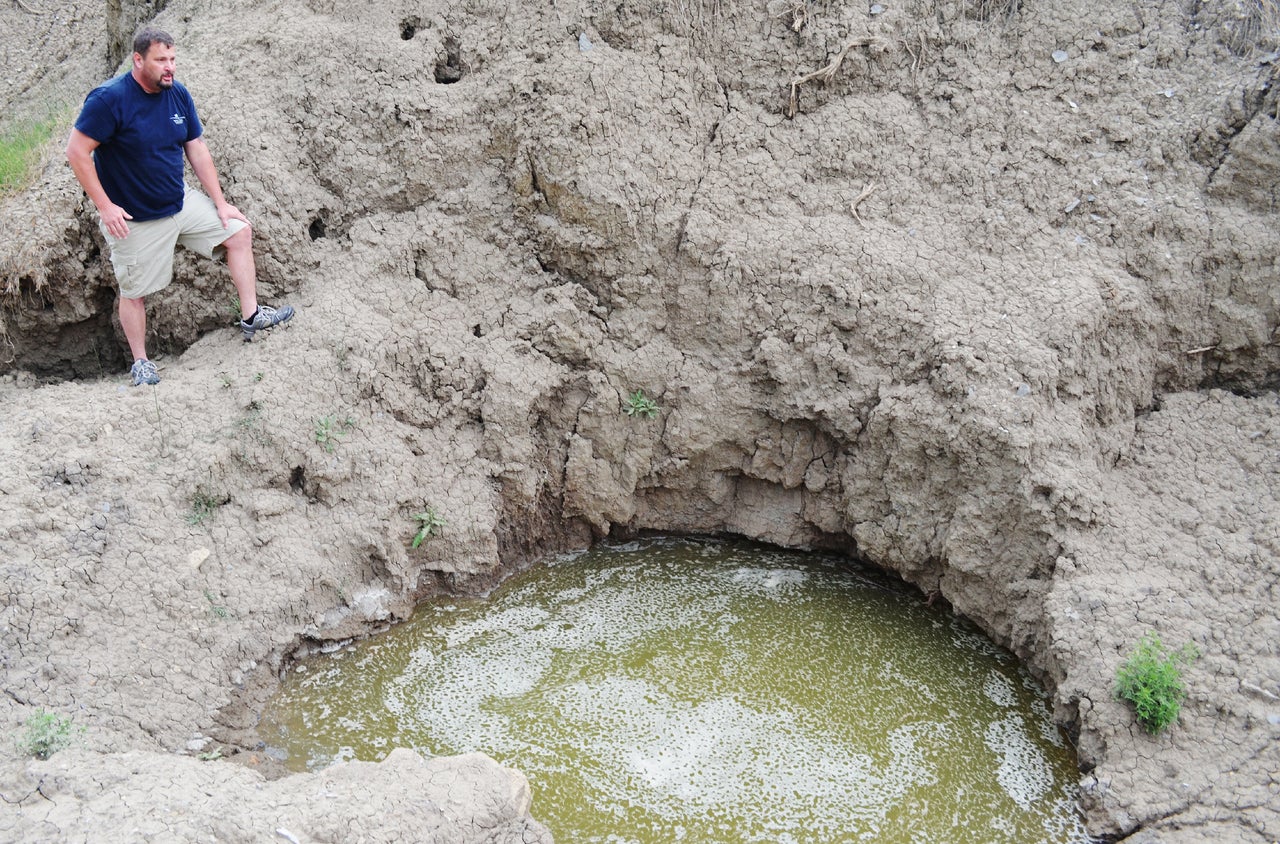
As Conway walked up the creek in Heron Lake with his son during that first visit, he glanced up and spotted fire-scorched logs that appeared to be arranged neatly in the shape of an “X.” He thought it had to be the “blaze” referenced in the poem.
“If you’ve been wise and found the blaze, look quickly down, your quest to cease,” it reads.
The poem has inspired thousands of people from around the world to search for Fenn’s mysterious treasure in the last eight years. People like Massimo Santini ― an engineer from Italy who traveled to the Southwest’s Four Corners region for several weeks in July with his wife and two young daughters. The family spent several days searching during their trip.
“It’s fun. You see many different places,” said Santini, adding that he doesn’t hold out hope that he’ll be the lucky finder. “You have to be real.”
While many come and go in their searches, some have become devoted ― even obsessed ― hunters. At least four people have died in accidents as they sought the chest, prompting the head of the New Mexico State Police and others to call on Fenn to end the search.
Conway suffers from chronic health issues that keep him from working and which he blames on exposure to sarin nerve gas during the Gulf War. He has made the 1,800-mile, 28-hour drive from his home to Heron Lake nearly 20 times since 2013, bringing along various helpers. He estimates he’s spent $40,000 on his explorations and insists he’s stumbled upon too many signs for the treasure not to be here ― like marks in the clay where it appeared someone had previously excavated. When he stuck a metal detector into the hole during one of his more recent trips, it beeped like he’d “hit the jackpot in Las Vegas,” he said.
But nothing shiny surfaced. And in May ― before my recent visit with him ― Conway got busted for illegally digging in the state park. As he and a friend hauled dirt one afternoon, park rangers approached the site. Conway thinks a man his friend brought along as extra help “ratted him out” after a disagreement.
The two escaped into the trees, but the following day authorities tracked Conway down at a nearby lodge. He came clean and told the officers about his quest. All three of his misdemeanor citations ― destroying public land, using a metal detector in a state park and littering ― note that he was looking for Fenn’s gold.
Conway emailed HuffPost a few weeks later, with the subject line “Forrest Fenn Treasure found??” The body of the email was hurried and lacking in punctuation.
“People are dying looking for this my mission now is to have them finish the dig so it puts an end to people dying,” he wrote.
I decided to make my own trip to Santa Fe this summer, not because I expected to find gold, but because I wanted to delve into what drives people like Conway to join what is, at best, the ultimate treasure hunt ― or at worst, some elaborate hoax.
“You won’t be disappointed,” Conway told me.
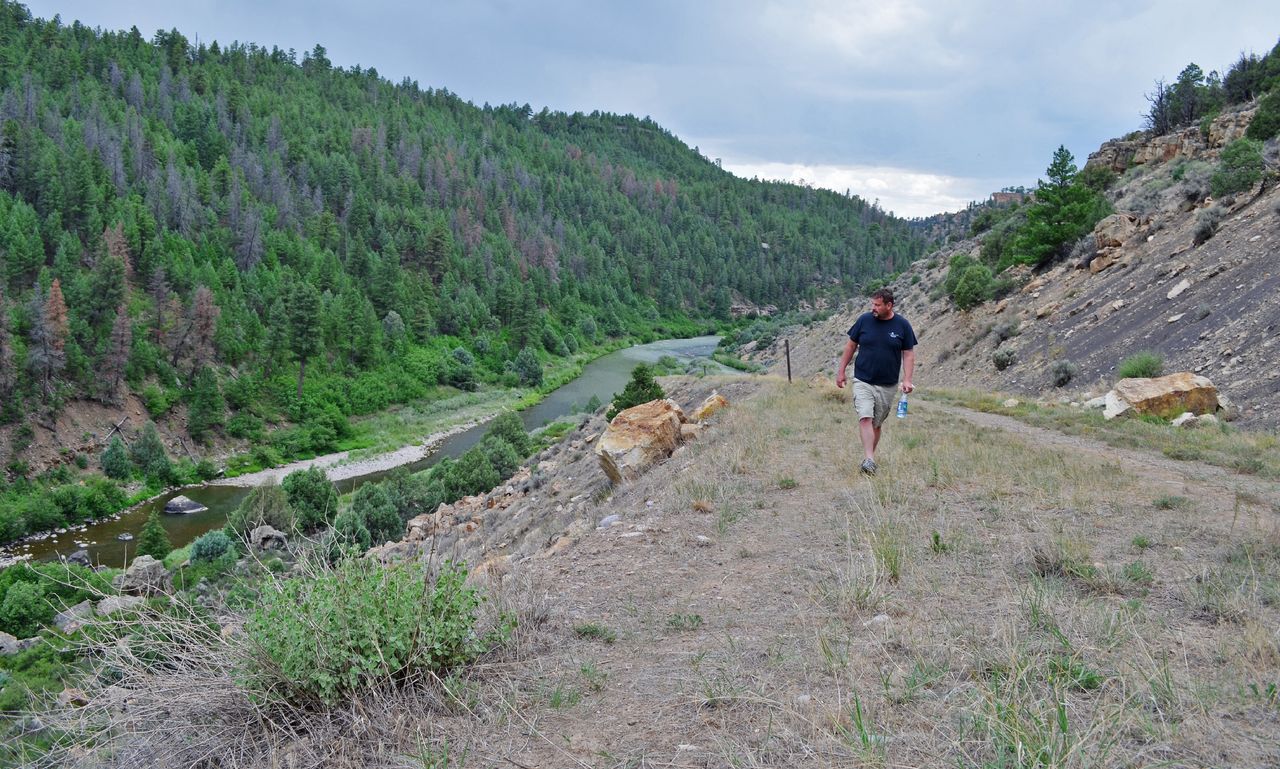
The person perhaps most surprised by how this treasure hunt has unfolded is Fenn.
The 88-year-old leans back into a leather couch in his office study at his Santa Fe home, sporting his usual attire of jeans, a button-down shirt and a large turquoise belt buckle. The shelves around him are loaded with rare books and nearly every square inch of the walls and tables are covered with colorful Native American antiquities ― knives, tomahawks, drums, shields, pottery, arrow quivers and beaded moccasins. A magnificent, hand-painted buffalo hide from the 18th century hangs on the wall above him.
In the back of a nearby closet, past a rack of antique rifles, is a walk-in vault in which Fenn safeguards his most prized possessions: gold artifacts and tribal jewelry, several Clovis points (prehistoric tools), an old revolver and a peace pipe that belonged to Sitting Bull, chief of the Lakota Sioux.
For many years, it was here that Fenn kept an ornate, 12th-century Romanesque chest, the one now supposedly hidden somewhere in the Rockies. Before hiding it, Fenn said he filled the box with dozens of gold nuggets ― two the size of a hen’s egg that weigh a pound each ― as well as hundreds of gold coins, rubies, sapphires, emeralds, diamonds and other antique jewelry. The box and its contents are estimated to be worth as much as $2 million.
The idea to hide some of his fortune came to Fenn after he was diagnosed in the late 1980s with what doctors believed was terminal kidney cancer. Fenn decided he would hike into the mountains and die next to the chest, leaving behind the poem.
“It was a great plan,” he said during a 2013 presentation at a bookstore in Taos, New Mexico. “The trouble with it was that I got well and ruined the story.”
But Fenn didn’t give up on the idea of an elaborate treasure hunt. In 2010, the eccentric Vietnam veteran, author and self-taught archaeologist said he ventured out and placed the loaded chest somewhere in the Rocky Mountains.
The memoir he self-published later that year, The Thrill of the Chase, includes the poem that he said contains nine clues on the treasure’s whereabouts. In subsequent interviews, Fenn’s offered additional hints, including that it’s located somewhere above 5,000 feet in elevation and not hidden in a graveyard or outhouse.
One line of the poem tells searchers to “put in below the home of Brown,” which inspired some to dig in outhouses.
Over the years, Fenn has received international attention and drawn a cult-like following of dedicated treasure hunters. He said he gets over 100 emails each day, about half of which are from people claiming they know where the treasure is hidden.
It doesn’t take long for me to realize Fenn much prefers talking about anything other than the hunt.
“How long is a rope?” he fires back when I ask if he has any hopes or expectations about who will find the loot. “A couple hundred thousand emails later, some of the luster’s off the lily,” he said when asked if he enjoys hearing from fans.
Fenn estimates more than 300,000 people have joined the search in some capacity, judging from his mailbox. Most of the correspondence is positive. On three occasions, people told him they were considering suicide until they learned of the hidden treasure.
But over the better part of a decade, a brainchild aimed at giving people hope and getting children into the wilderness and away from their computer screens has morphed into something that, at times, can be ugly. People who were once excited about a chance to strike it rich have grown frustrated. Some are angry.
On the many online forums dedicated to finding the treasure, some question if the whole thing is made up, perhaps a scheme Fenn devised to sell books. Others speculate someone has already dug up the chest. Maybe it was Fenn himself.
He’s received death threats. Once a man called and told him, “If you don’t tell me where the treasure is right now, I’m going to kill you,” Fenn said.
In July, a Nevada man was sentenced to three years probation for stalking Fenn’s daughter and granddaughter. Francisco “Paco” Chavez, admitted to showing up at their home in violation of a restraining order, according to The Santa Fe New Mexican. In 2016, Chavez reportedly contacted Fenn claiming that he’d cracked the riddle and determined that the treasure must be his granddaughter. His letter contained pictures of Fenn’s granddaughter, along with disturbing messages.
In October, a Pennsylvania man was arrested after breaking onto Fenn’s property and trying to make off with a Spanish-style chest from a guest house, The Associated Press reported. Fenn, one of his daughters and a police officer all confronted the man with handguns. The chest the man tried to steal was filled not with gold and diamonds, but linens and towels.
As Fenn and I visited at his home one July afternoon, he told me to have a look inside a U.S. Post Office bin tucked beneath his office desk. It was stuffed to the brim with hundreds of letters, sent from every corner of the U.S. and overseas.
“That’s the sixth box of letters I’ve received from people I don’t know,” he said.
In one of the more memorable notes, which Fenn keeps in the top drawer of his desk, a correspondent who identified themselves as “BlackBat~30” demanded that Fenn deposit $3,500 worth of Bitcoin into an account. If he refused, the writer threatened to tell Fenn’s wife and everyone else who’d listen of some undisclosed offense Fenn allegedly committed.
“I have evidence of what you’ve been hiding,” the person wrote in the typed, two-sided letter. “I won’t go into specifics here in case your wife intercepts this, but you know what I’m talking about.”
The hunt has clearly brought happiness, better health or a new appreciation for the outdoors for some participants. For others, it’s wrought pain, financial hardship and even death. It’s brought some families and friends together, torn others apart.
“I am a little surprised at the variation of personalities that are involved,” Fenn told me in an email. “It is [a] cross-section of who we are as a people, and an interesting study in anthropology.”
Fenn admits that he wouldn’t have hidden the treasure if he’d known then what he does now. But he bristles at the idea that the whole thing is an elaborate hoax.
“It’s worth finding,” he said. “It’s worth looking for and it’s worth finding.”
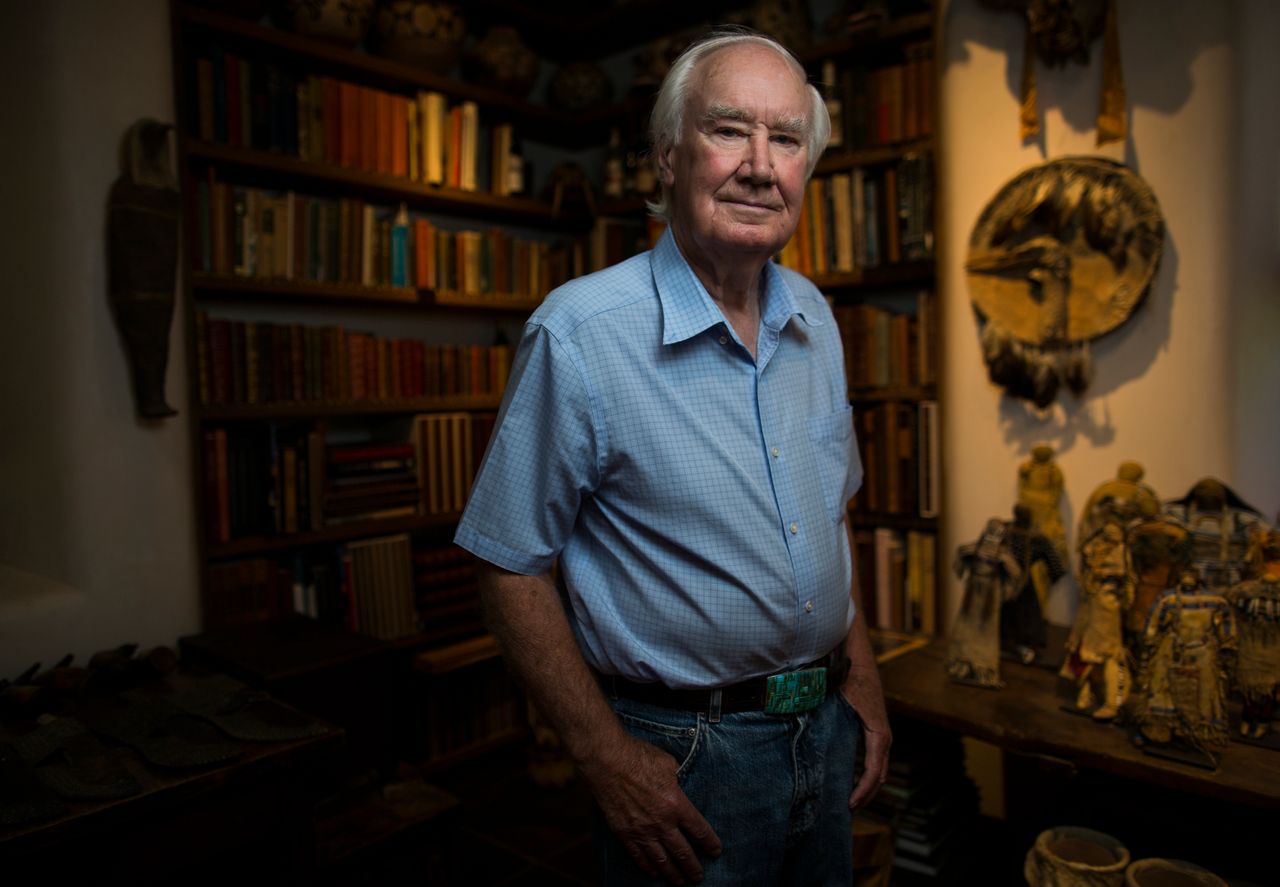
When I first asked Fenn to meet in person, he declined, telling me that he was “about interviewed out.” But Sacha Johnston, a 37-year-old Albuquerque real estate agent and passionate Fenn treasure hunter, gave me an in, promising Fenn several jars of her homemade jam.
“I’ve threatened to maim her if she doesn’t bring me jam,” Fenn joked. (Although he agreed to meet, he declined to have his photo taken).
Johnston has undertaken more than 200 searches for the treasure in the last five years, and met many friends (including her boyfriend) in the process. She also bonded with Fenn; it’s a friendship that started because of the treasure hunt but which she said is based on an understanding that the two don’t discuss it.
Still, like many other searchers, Johnston updates Fenn via email about her trips into the desert. Only rarely does she get a reply.
Johnston is clearly irked by media portrayals of both Fenn and the searchers. Money, she said, “amplifies the extremes” in people, both the good and the bad. Most participants are just normal people who are careful not to put themselves and others in harm’s way. The most reckless searchers, she said, are often the most vocal, and they’ve given the larger hunt community a bad name.
“Anyone who runs around claiming they know where it is is full of shit,” she said.
Johnston, a mother of two, doesn’t let the hunt interfere with her responsibilities at home or work. For her, it’s all about the experience, an excuse to get outside when she has free time. The chance of striking it rich, however small it may be, is simply an added bonus.
“Logic goes out the window when greed takes over,” she said. “If you choose to join this treasure hunt, you do so for the adventure, not for the prize at the end of the rainbow.”
But even if the hunt was meant to inspire adventure, it’s come with decidedly grim consequences for searchers who risked too much.
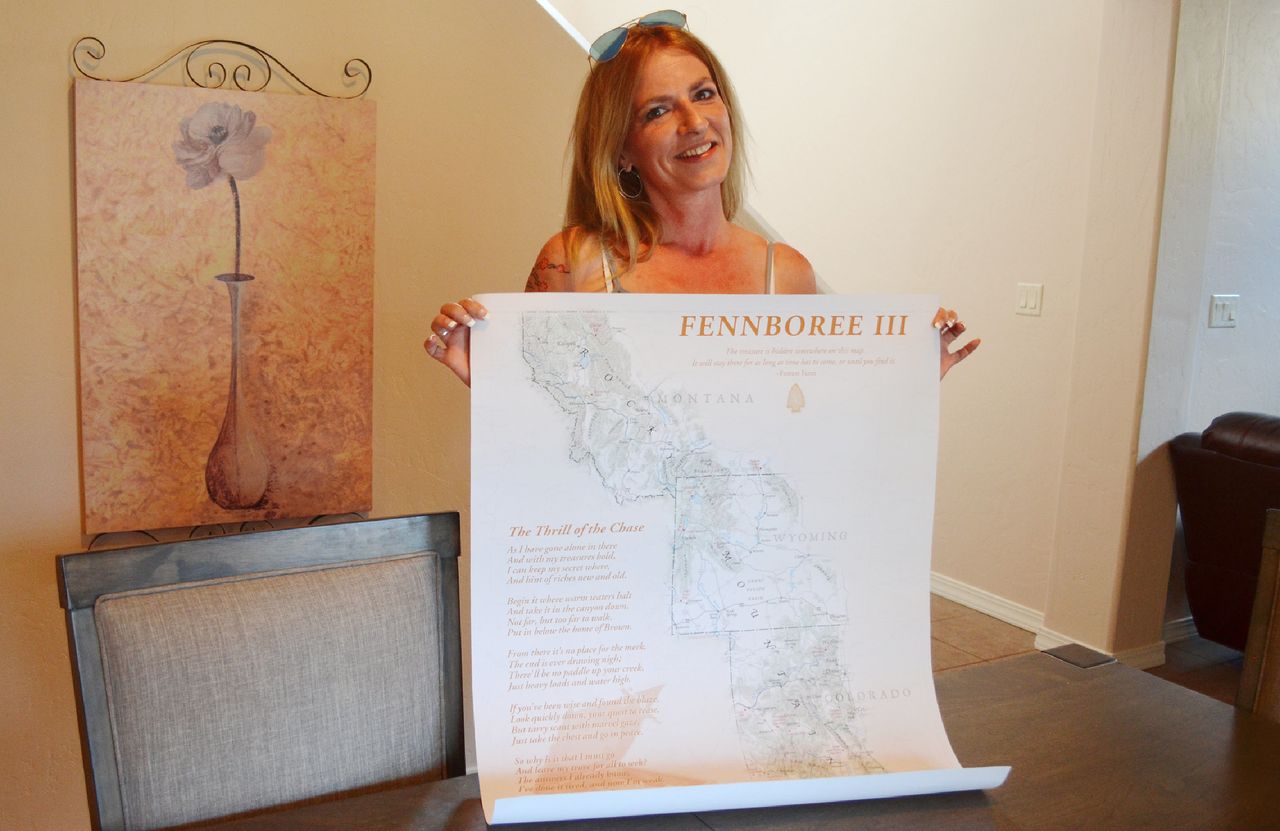
In January 2016, searcher Randy Bilyeu disappeared while looking for the treasure along the Rio Grande in northern New Mexico. Bilyeu, 54, had moved from Florida to Colorado in order to be closer to the search. Rescuers initially found his dog and an inflatable raft about nine miles downstream from where he parked his vehicle, The Albuquerque Journal reported. Bilyeu’s remains were found six months later along the Rio Grande just north of Cochiti Lake.
In the wake of accident, Bilyeu’s ex-wife, Linda, wrote an open letter in which she called the hunt a “hoax” and blamed Fenn for the death. Randy went missing, she wrote, because Fenn “manipulated his mind into believing the treasure was in a certain location.”
2017 proved even more deadly. Jeff Murphy, 53, fell to his death in early June while searching for the treasure in Yellowstone National Park. Later that month, search crews found the body of Paris Wallace, a 52-year-old pastor from Colorado, seven miles downriver from where he’d parked his vehicle along the Rio Grande. And in July, 31-year-old Eric Ashby was killed when he tried to cross a violent section of the Arkansas River in southern Colorado in a cheap inflatable raft, Wired reported.
With each incident, Fenn faced renewed calls to dig up the chest and end the hunt. He has refused, saying doing so would be unfair to those who have invested time and money.
“I would implore that he stop this nonsense,” New Mexico State Police Chief Pete Kassetas said after Wallace’s body was found.
“He’s putting lives at risk,” Kassetas told The Associated Press in another interview.
In an email to HuffPost, state police officials said they discourage participation in the Fenn treasure hunt.
On the flip side, the New Mexico state tourism agency saw the hunt as a way to lure would-be adventure seekers to the state, at least at first. A February 2015 tourism promotional video featured Fenn, along with sweeping views of the Land of Enchantment.
“Finding the gold isn’t what it’s all about,” reads the teaser text. “It’s about venturing out and seeing parts of New Mexico you might otherwise miss. In some ways that might be better than gold!”
The ad has been viewed nearly 500,000 times on YouTube.
Asked to comment on the quest, a spokeswoman said the agency doesn’t have data on the number of visitors who travel to New Mexico in search of the treasure. “Safety and preparedness must always be a top priority when visiting any state,” she wrote.
Johnston said Fenn isn’t the cold-hearted monster that some have made him out to be. When Bilyeu disappeared, Fenn chartered a helicopter to help volunteers look for him.
And after Wallace’s accident, Fenn sent his widow, Mitzi, a condolence letter. He told her he felt it was his loss that he didn’t get to meet the man, Mitzi told HuffPost by phone from her home in Grand Junction, Colorado. She places no blame on Fenn for what happened.
“Everyone takes their lives in their own hands every day in everything that they do,” she said. “My husband didn’t lose his life because of the treasure. He lost his life because it was his time to go. He did something that wasn’t safe when he tried to cross a portion of water.”
Mitzi hopes Fenn lets the treasure hunt run its course. She sometimes accompanied her husband on his treks, and she misses the thrill of it. She said she may one day pick up where he left off.
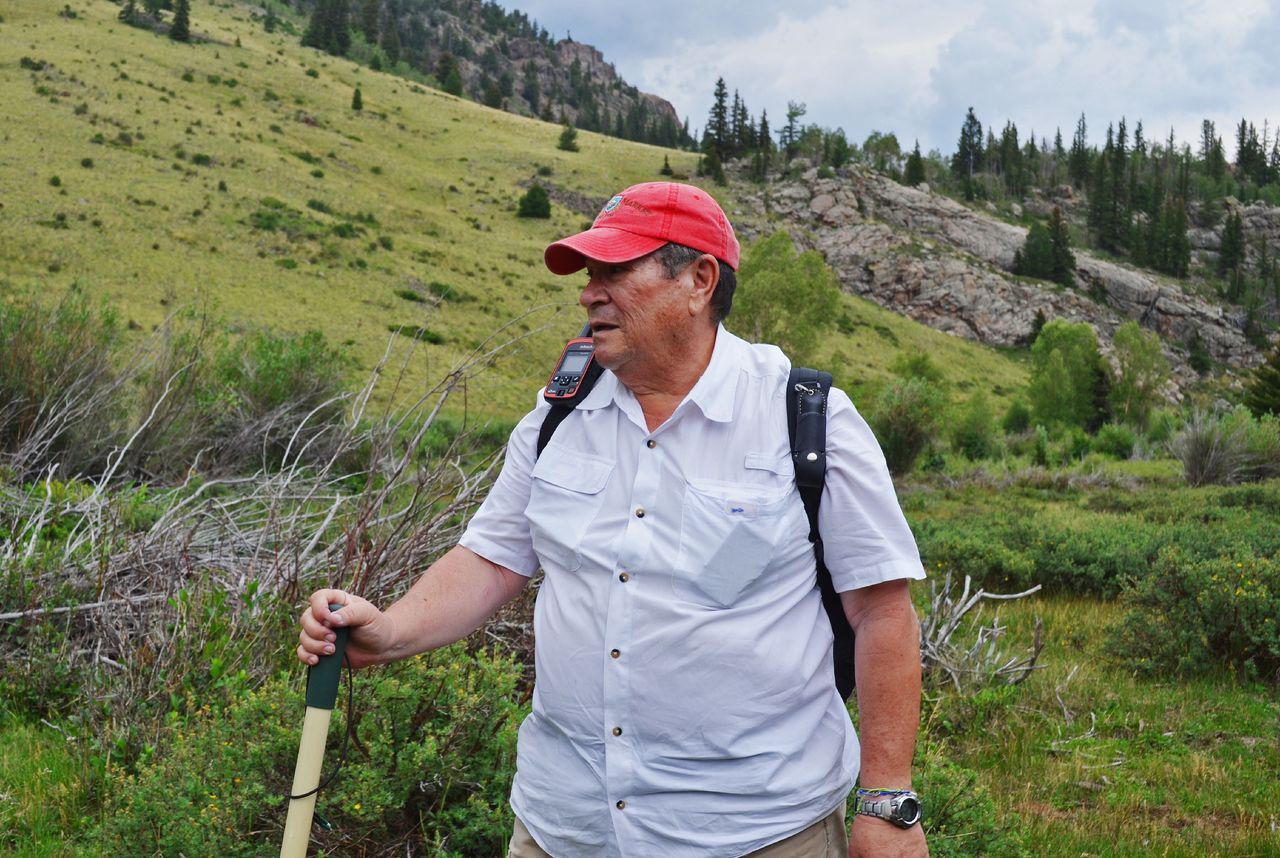
Many of the hunters have low expectations for their quest, even as they keep it up. Toby Younis, 69, describes himself as a “full-time treasure hunter.” When not in the woods outside Albuquerque, he’s posting videos to his Youtube channel dissecting Fenn’s most recent comments for other fanatics.
I asked Younis if he thinks the treasure will be found in his lifetime.
“No,” he said. Still, he keeps looking.
“I’m somewhere in that triangle of hope, greed and adventure,” he said.
Fenn sent the search community into a frenzy in February when he said his “gut feeling is that someone will find it this summer.” He’s also said it could be found “soon or 1,000 years from now,” and that someone has been within 200 feet of the gold.
I joined Younis, his YouTube co-host Shelley Carney and her husband, Kevin, in July for what I was assured was a “real hunt” ― not one of the staged ones that Younis said searchers often take journalists on. We drove three hours to a site along the Rio de los Piños near the New Mexico-Colorado border, and hiked through a swath of tall pine trees and tall grass. Near the entrance of a rocky, narrow canyon, Younis recited the poem from memory.
“Begin it where warm waters halt, and take it in the canyon down,” he said in a loud, low, dramatic voice, waving his hands toward the rocky canyon walls.
The area, said Younis, is “Fenny and fishy.” Not only does it fit the clues in the poem, it’s a place that he expects Fenn, a lifelong fly fisherman, came to chase trout ― and where he may have wanted to take his last breath, beside his chest of gold.
Shortly after we made it to the canyon, a storm started to move in. The wind picked up. Having been struck by lightning in 1983 on Mount Elbert in Colorado, Younis doesn’t take any chances.
“I learned that lesson,” he said.
The trio wasn’t disappointed that they had to cut short their outing. For this group, the hunt is less about finding gold as it is breaking a sweat outdoors and enjoying one another’s company.
“That’s the real treasure he gave me,” Kevin said of Fenn.
Younis and Carney have since decided to end their quest. The two announced in October that they won’t continue seeking the gold and were shuttering their YouTube channel about the hunt in order to pursue a new project.
“This is not a personal thing, it’s just we can’t do this anymore,” Younis said in a video posted to their account. “We can’t spend any more time on it because we aren’t making any headway.”

Along with stressing safety, Fenn urges people not to “bend” the poem to fit a solution. Each clue in its 24 lines can be interpreted in countless ways ― and has been.
Conway’s “solve,” as some Fenn treasure hunters call it, is complex, but he’s confident his focus on the area in Heron Lake State Park as the treasure’s locale is correct. He’s not “some nut,” he tells me. He estimates he was within a few feet of the chest when authorities finally caught him in May. If it weren’t for the “rat fucking bastard” who tipped off the park police, he’s sure he’d be a rich man.
I was less sure. “What if you’re wrong?”
“Then I look like a fool,” he said. “But if I’m right and I save somebody’s life, then I’ll take that.”
In the weeks after he got busted, Conway tried to convince state officials to excavate the site and bring an end to a hunt that has proven more dangerous than anyone expected. He’s now on probation, and while he’s thought about returning to dig at night, getting caught a second time would likely result in jail time.
A spokeswoman for the New Mexico State Parks told HuffPost the agency has no plans to follow through with Conway’s request. “There is no evidence of Forrest Fenn’s treasure in this area,” she said, adding that it would work with federal officials to document and mitigate the damage he caused with his digging.
“If individuals conduct unauthorized excavations within parks, they will be cited with zero tolerance,” Barry Lucero, a law enforcement bureau chief for the state parks department, said in an accompanying statement.
Fenn has repeatedly told searchers they shouldn’t look “any place where an 80-year-old man could not have taken it.” And at this summer’s annual gathering of treasure hunters known as Fennboree, he seemed to send Conway a pretty clear message: “You’re not supposed to dig where you’re not supposed to dig,” he told him, in an exchange Younis later posted to his YouTube channel.
None of this has given Conway any pause. He suspects Fenn is just trying to keep himself out of trouble. After all, if the treasure were buried in Heron Lake State Park, Fenn would likely also have had to break state laws to put it there.
Conway acknowledges that his quest is not what it once was. What started as an exciting adventure, he said, has become a burden, an “emotional rollercoaster” that’s kept him from traveling with his wife and enjoying other things in life.
“I should just walk away, you know? I’ve already got too much time and money invested in it,” he said. “But when you know that you’re right, when there’s enough evidence ― the only way I’m not right is if he didn’t hide it.”
Top illustration: Daniel Downey.
